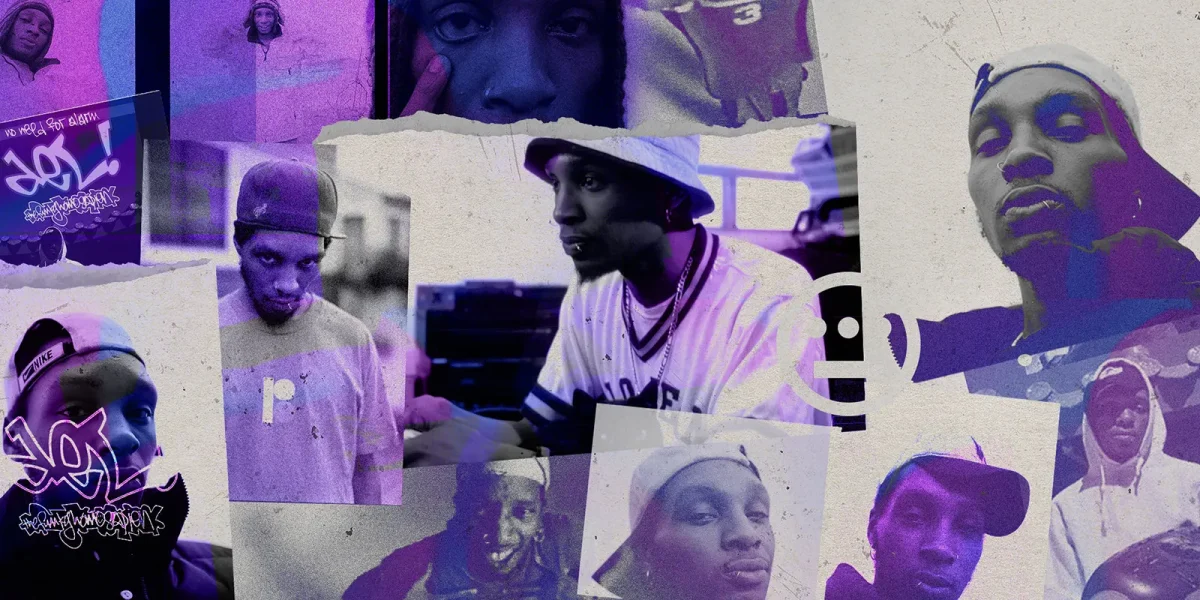In celebration of Rhymesayers Entertainment re-releasing Del the Funky Homosapien’s 2000 album Both Sides of the Brain for its 25th anniversary this month, I thought it would be a good time to revisit one of our most popular features on Hieroglyphics Dot Com, which debuted in 2000 to support the album’s original launch.

Introduction by Stinke
Written by / videos courtesy of Jacob Rosenberg
Originally published on Hieroglyphics.com, April 3, 2000
Adapted for Hieroglyphics.org, November 2025
Big Brain Energy
Written by Stinke
Del the Funky Homosapien is the first artist from the Hiero Crew to drop a solo album independently on Hieroglyphics Imperium Records. Perhaps even more importantly, his fourth studio album, Both Sides of the Brain, will be the first Hiero release distributed through Red Distribution—a distributor with substantial retail reach. While Hiero’s previous collective effort, 3rd Eye Vision, managed to make its way into a considerable number of storefronts nationwide as an indie release, BSOTB will have far broader distribution than any previous Hiero release.
Hiero now stands on the doorstep of a new chapter in their recording careers, as each Hieroglyphics member can return to their solo recording foundations—this time in a fully independent setting.
Right Brain Instinct
With the release of Both Sides of the Brain, Del fully embraced this new independence, benefiting from the momentum and resources that the success of 3rd Eye Vision had brought to the label. He could take as much time as he wanted experimenting, planning, and producing, crafting an album free from any A&R interference dictating its direction or feel, largely from the comfort of his own home.
Though Del had both the time and resources to craft the album he wanted, the opening track, “Time Is Too Expensive,” reminds us that even with freedom, time is precious—too expensive to waste.
To help ensure this, Domino wanted Del to experience something fresh while recording the album and made certain—as Jacob Rosenberg discusses below—to find a studio that reflected Del’s desire to expand creatively.
Left Brain Details
Seventeen cuts deep, Both Sides of the Brain clocks in at just over 73 minutes, with songs ranging from tales of stinky people to crack-head “soopa feens,” and even a track about the little things that irritate Del. And, of course, there are plenty of hard-hitting beats from his tried-and-true production weapon of choice, the SP-1200 drum machine, paired with Del’s innovative, razor-sharp lyrics and inventive flows.
Speaking of flow, special guests include El-P of Company Flow; Prince Paul, who produced “Signature Slogans”; Khaos Unique on “Proto Culture,” a track all about video games; and Hiero members A-Plus, Casual, and Domino, who also served as executive producers on the record.
The album’s visual design was done by Tre Moon & Miss Tea, whose artwork is sampled among the images accompanying this post. All photographs for the album were taken by Jacob Rosenberg, who is about to share a behind-the-scenes look at the studio while creating Both Sides of the Brain.
Del the Funky Homosapien’s Both Sides of the Brain will be released April 11, 2000, on Hieroglyphics Imperium Records on CD, cassette, and vinyl—in stores everywhere.
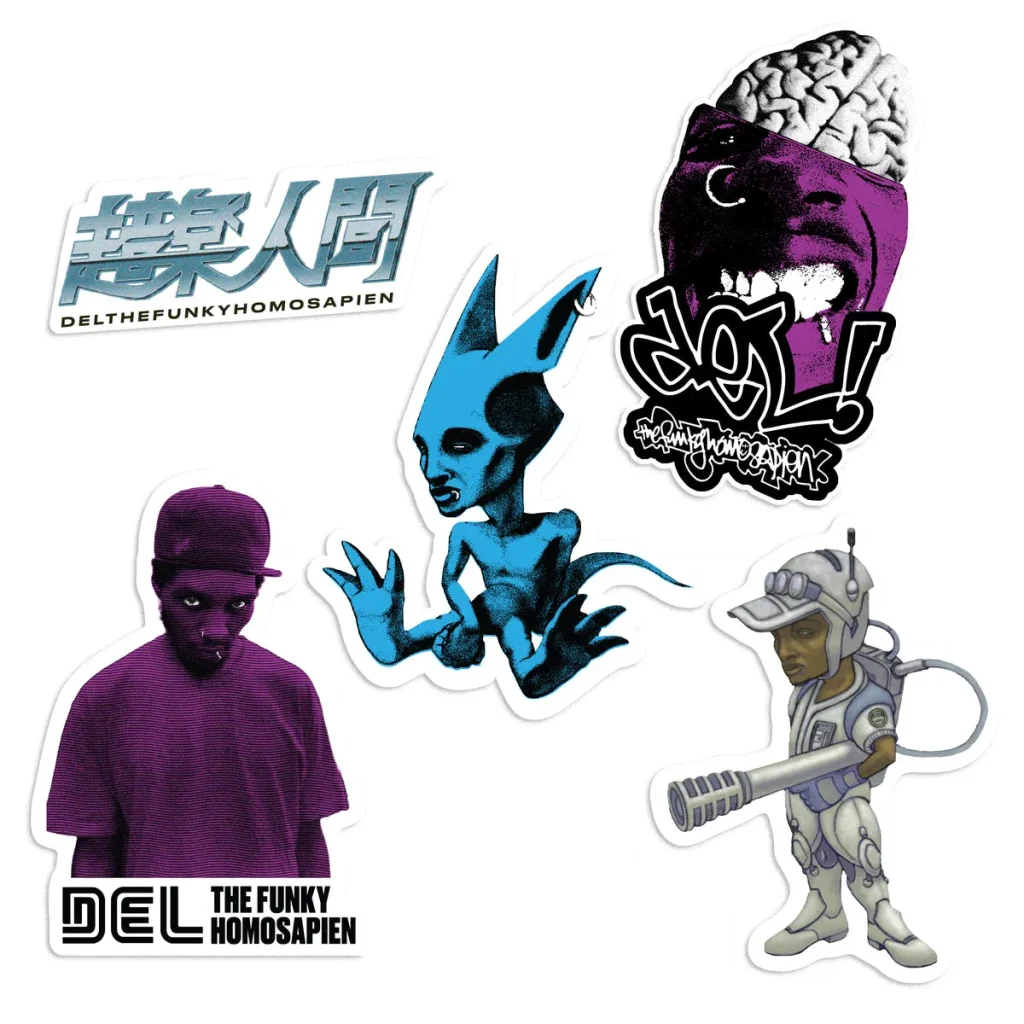
Behind The Scenes
Written by Jacob Rosenberg
The studio was a refreshing change for Del when he began working on his next album, Both Sides of the Brain.
It’s not that the previous studio, Hyde Street Studios, was bad; Domino just felt strongly about providing a new environment for Del to create his new album. 3030 Studios3—engineered and discovered for Domino by Matt Kelley—is in a different neighborhood and offers a distinct setting compared to Hyde Street. Needless to say, Matt came through.
Leading up to the album’s recording—which began gathering momentum around mid-November of ’98—I continually reminded Domino that despite my busy work schedule, I wanted to be in the studio when Del’s album was going down. If not for future documentary purposes, at least to fulfill what I saw as my obligation to all the heads on the website who are interested in the same behind-the-scenes stuff that I am.
I was doing the computer thing full-time, so I had to miss a day of work when Domino gave me the traditional “night-before” notice that we’d be in the studio the next day. In fact, I ended up picking up Domino and Del and getting them to the studio along with Del’s equipment.
Gear Up, Load Out
Del produced all of his beats on his SP-1200 sampler-drum machine, so it was just a matter of getting his machine in sync with the two-inch reel-to-reel tape system at 3030 to begin recording.
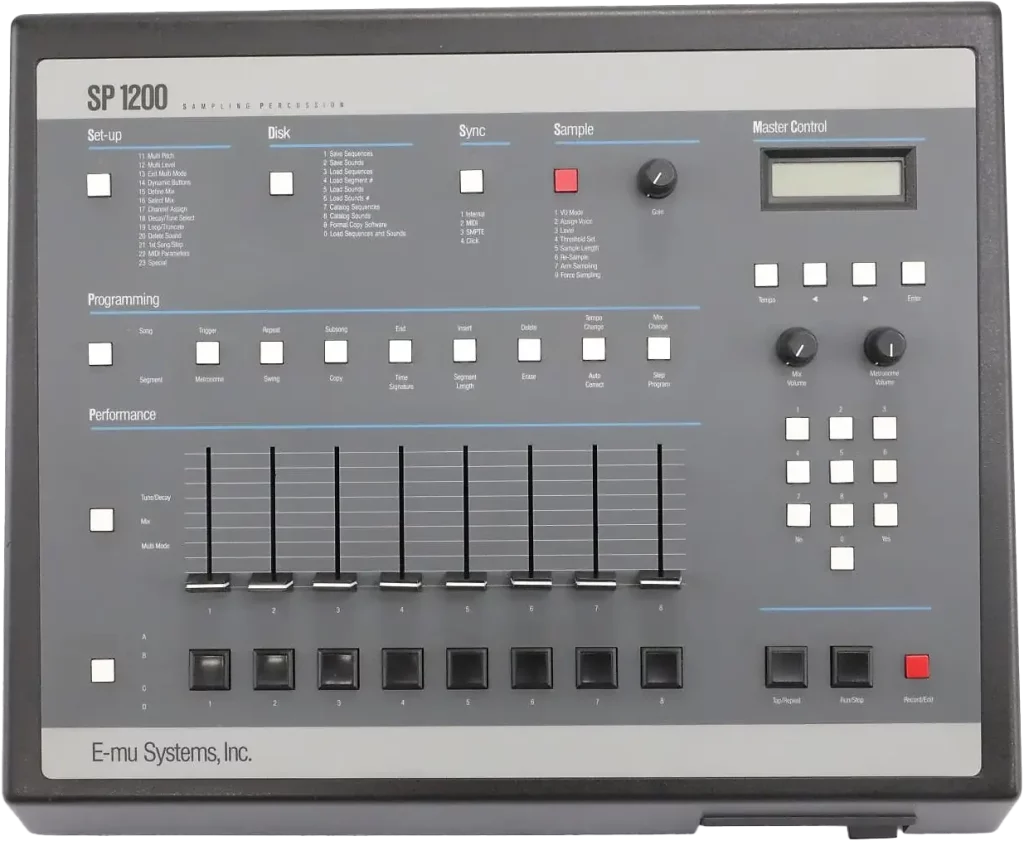
In the beginning, the physical space of the studio was overwhelming. Very high ceilings and huge bay windows provided natural light to the room where the vocals were laid down. Yet, shortly after, I felt as if the whole experience were more organic and down to earth.
Jaw Gymnastics
It took Del and Matt a while to get things in order, but once they did, Del went into the vocal booth and started laying down tracks. They worked three days in a row, and I could only attend two of those. They averaged three to four songs a day. That means both the beats and vocals were laid down, including the ad-libs. That doesn’t include the scratches, which were roughly mapped out by Del but ultimately performed by Jay-Biz a few months later.
I tried to videotape Del as much as I could. Quality wasn’t as much of a concern as content, since there was never really any footage of Del in the studio released other than the old 3rd Eye Vision stuff we did on the website. If you’re a Del fan and you’ve seen a show, the studio sessions will make for an even more amusing experience. Del robotically and rhythmically nods to the beat as he belts out his lyrics. It’s hypnotic to watch, and I couldn’t help but smile at his intensity.
Catch All This
During breaks, Del and I would shoot photos or go downstairs and across the street to a tight food spot to get some vits (giggidy, driggidy, and all that). Del remained positive and optimistic in the studio, acknowledging that for the first time in his life he felt he was really and truly making the album he wanted. He was able to make the beats and create the feel of the album in the comfort of his own home. With his SP-1200, he could then transport the music easily into the studio. I believe he ended up with an album that is not only very personal but very expressive of who Del is at this moment.
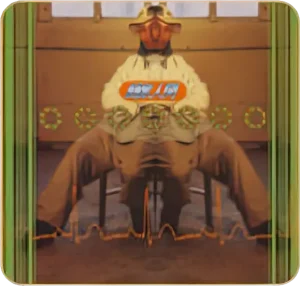
Getting Cerebral
Allow me to go on a tangent. Del’s style is such that every album is different—each one has a unique appeal and flavor. “Eye Examination” seems far from I Wish My Brother George Was Here, yet it doesn’t fit the mold of No Need for Alarm either. With this in mind, I see Del as an ever-changing artist who doesn’t embody the musical spirit of the time, but instead articulates the musical spirit of himself at a particular moment. Maybe most good artists are capable of this, but Del is profoundly shaped in this way.
I see Both Sides of the Brain as Del’s quintessential album—one that most accurately reflects the personal artist he is and the music he makes at a certain time, all without substantial outside, corporate, or label influence. Domino did a great job overseeing Del’s production. He didn’t restrict Del; he simply enabled him to create a sturdy canvas and go to work. ’Nuff said—I hope you get my drift.
Del robotically and rhythmically nods to the beat as he belts out his lyrics. It’s hypnotic to watch, and I couldn’t help but smile at his intensity.
Back to the Studio
After the first weekend of recording, I stayed in close touch with both Del and Domino to make sure I’d get more of a heads-up for the second round. I did, and about a week later we were back in the studio.
Del laid down lyrics for more songs, and this time he brought the Dreamcast—a brand-new import at the time, à la “Santa Domino”—into the studio. We went head-to-head during downtime, and when Alex Tse was in town, he made sure to stop by to check progress and grab guest passes to Power Exchange from our homie Big Lee.
Guest Artists & Saucee Rosenjake
During that weekend session, Pep Love showed up one night to lay down some vocals for a song he was going to do with Del. Although that song didn’t happen, Pep and I were able to contribute vocals to the “Pet Peeves” medley. So for all of you who voted in the poll1 for Sonic and Stinke as Del’s guest vocalists—y’all slept on lightweight Jake (aka “Flossy P” to Karen Dere, aka yours truly). I was delighted to embody the role Del had lined up for me, so for the first time I laced up the headphones and came correct (while making a complete ass of myself—see video “Saucee Jake”).
Video Crossover
The next time I went to 3030 was to shoot the middle section of the “At the Helm” video (you can see a lot of the studio from the point where Del is picked up by Tajai until he leaves the studio with Tajai). Del had finished, for the most part, the recordings he would do in San Francisco. Except for Casual’s absence, it was a fun day with a healthy amount of work.
After the “At the Helm” video was shot, I was continuously busy editing and working, then moving to Los Angeles. I missed the later sessions to touch things up, but I witnessed at least 75% of the tracks recorded at 3030. I heard the stories of the recordings with El-P and Prince Paul, with Dave from De La Soul, and other potential songs that never came to fruition.
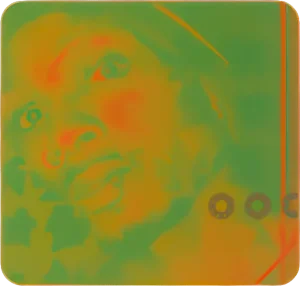
Nodding Dome
I received rough copies of the album before and after the scratches were added—which (sorry, Stinke) I vowed not to dub. Some of Del’s ideas and “concepts” were lost in the process, but that always happens. What remains is an incredibly solid piece of work that embodies the music of one of my favorite artists.
What sticks out most vividly in my mind is that everlasting image of Del’s concentrated nodding dome. That Del is the one who, without a doubt, would rather be doing nothing else than making music. RIP MT2 and all that. Peas.
Footnotes
1. Results from a vote held in February 2000 were posted on Hieroglyphics Dot Com, titled “Which Secret Character Will Be Making a Guest Appearance on Both Sides of the Brain?”
Out of a total of 2,131 votes, 353 peeps voted for “Saucee Rosenjake,” 536 folks voted for “Stink-A-Licious,” and 1,242 people voted for “Sonic the Hedgehog.”
2. Mike Ternasky — founder of the Plan B skate video and Jacob’s mentor and friend.
3. If the name “3030” looks familiar, it’s no coincidence: it was the studio’s original name and inspired the title of the album that Del would release with Dan the Automator shortly after Both Sides of the Brain—2000’s Deltron 3030.
Videos in the Studio
Jacob shot a lot of video while he was in the studio with Del, Domino, and Matt Kelley. It was a standout feature of the original article when it first appeared on Hieroglyphics Dot Com in 2000.
I tried my best to upscale the old low–bit rate, low-resolution QuickTime videos using modern A.I. tools, but the results weren’t great. So I’ve decided to present them as they are, just converted into a modern web format that current browsers can play.
Day 1: The Mythical SP-1200
Del the Funky Homosapien unveils the mythical SP-1200 sampler-drum machine used on Both Sides of the Brain.
Introducing Matt Kelley
Tracking the 1st Song into the mixing board, and preparing the reel-to-reel tape.
Matt Kelley: EQing Multiple Tracks
Matt is using the mixing board’s EQ to dial in sounds, and he uses a marker on tape to record the settings in case they need to be loaded again later.
Pet Peeves
The original notes I got from Jake for this video clip are “Driggidy.”
Sauce Jake
The birth of an icon: Saucee Rosenjake makes his debut on the song “Pet Peeves.”
Style Police – Part 1
Del practicing and reviewing lyrics for the song “Style Police.”
Style Police – Part 2
Adding officer voice-over clips and ad-libs. Yes. YES. YEEEEEESS.
BM’s
Laying down vocals in the booth for “BM’s.”
Skull & Crossbones
Day 3: Laying down vocals in the booth for “Skull & Crossbones.”
Disastrous – Part 1
Laying down vocals in the booth for “Disastrous.”
Disastrous – Part 2
Domino makes an appearance as Del continues to lay down vocals in the booth for the song, “Disastrous.”
Disastrous – Part 3
Del lays down the chorus to “Disastrous.”
Phoney Phranchise
Laying down the vocals for what would become the album’s first single, “Phoney Phranchise.“
The Skit
The acting chops come out in this skit featuring Del and Domino.
